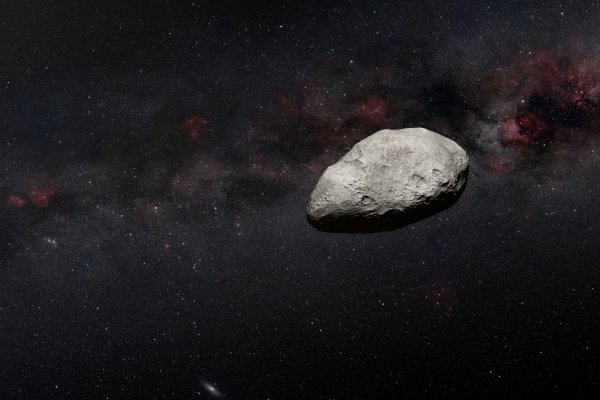An international team of European astronomers using the James Webb Space Telescope (JWST) of NASA, the European Space Agency (ESA) and the Canadian Space Agency (CSA) has detected an extremely small and previously unknown asteroid. At 100 to 200 metres in diameter, the object is probably the smallest observed to date by Webb within the main asteroid belt, located between Mars and Jupiter.
The work, which was published on Astronomy & Astrophysics, counts with the participation of researcher Toni Santana-Ros of the Institute of Cosmos Sciences of the University of Barcelona (ICCUB), the Institute of Space Studies of Catalonia (IEEC) and the University of Alicante.
The detection of this asteroid has relevant implications for understanding the formation and evolution of the Solar System. Current models predict the presence of very small asteroids, but they have not been studied in as much detail as their larger counterparts due to the great difficulty in observing them. In this sense, the great novelty of this finding lies in the fact that the research team has used a new technique to detect and characterise small objects with the data generated by the James Webb Telescope: the MIRI (Mid-InfraRed Instrument) calibration based on infrared wavelengths.
According to Thomas Müller, an astronomer at the Max Planck Institute for Extraterrestrial Physics (Germany), they have quite unexpectedly detected a small asteroid in the publicly available MIRI calibration observations. In order to detect such a body with ground-based optical telescopes, more than an hour of observations with the largest telescopes available would have been required. However, with Webb, the largest and most powerful telescope ever launched into space, the object is visible in just a few minutes of observation, as explained by Toni Santana-Ros (ICCUB-IEEC-UA), who is co-author of the study.
A priori, the team could not know whether the detected object was very small and far away or very large and close. The novelty of the method used lies in the fact that the researchers have combined measurements of the position of the observed object with the constraints due to the thermal model derived from the JWST infrared observations. In this way, we were able to define the distance to the object and its size, Santana-Ros said.
The Webb observations that revealed this small asteroid were not originally designed to hunt for new asteroids - in fact, they were calibration images of the main-belt asteroid 10920, which astronomers discovered in 1998. But the JWST calibration team considered them to have failed for technical reasons due to the brightness of the target and a shift in the telescope pointing. Nevertheless, they used the data from asteroid 10920 to establish and test the new technique for constraining the orbit of an object and estimating its size. The validity of the method was demonstrated for asteroid 10920 using MIRI observations combined with data from ground-based telescopes and ESA's Gaia mission.
During the analysis of the MIRI data, astronomers discovered an asteroid in the same field of view that was much smaller than 10920 and previously unknown. The results of the work suggest that the object is between 100 and 200 metres long, which occupies a very low-inclination orbit, and is in the inner region of the main belt at the time of the Webb observations.
The Solar System is full of asteroids and small rocky bodies: astronomers currently know of more than 1.1 million such remnants from the early Solar System. The ability of NASA, ESA and CSA's James Webb Space Telescope to explore these objects at infrared wavelengths is expected to lead to groundbreaking new scientific discoveries.
The international team of astronomers involved in this study includes Toni Santana-Ros from the University of Alicante and University of Barcelona; P. Bartczak from the University of Alicante and A. Mickiewicz University (Poland); T. G. Müller and S. Kruk from the Max Planck Institute for Extraterrestrial Physics (Germany); M. Micheli from ESA's NEO Coordination Centre (Italy); and D. Oszkiewicz from A. Mickiewicz University (Poland).
Reference:
“Asteroids seen by JWST-MIRI: Radiometric size, distance, and orbit constraints”, Astronomy & Astrophysics (2023) DOI: 10.1051/0004-6361/202245304



